How to win at Osmos: beat the physics-based puzzle game
The skills to survive and dominate each type of Osmos arena
Impasse

These arenas typically start out static and tightly packed. The main tip is 'push and swoop'. If you can't absorb anything around you, use ejected matter to push a mote into a larger one. Wait until it starts being absorbed. As it becomes smaller than your mote, jump in and steal the rest of the snack.
Don't be afraid of Impasse arenas with antimatter - chain reactions are less problematic there, buying you space to move and ensuring motes don't grow out of control.
Repulsor
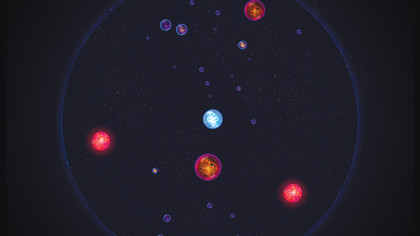
The number-one tip here is to slow down time. Repulsors repel motes around them, but attract each other. Therefore, you have to plan your route around them, snapping up smaller motes, and then, when demanded, absorbing the Repulsors as well. If your mote manages to grow to gargantuan size, speed up time and wait until the Repulsors merge into one giant before consuming it.
Sentient
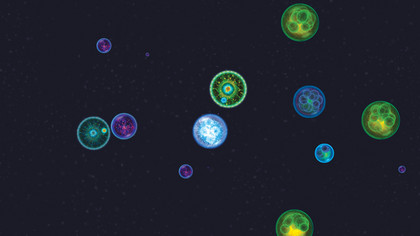
These arenas have motes with intelligence. Those in early levels aren't too bright, but AI motes soon become vicious. However, they operate at a particular game speed and have certain thresholds for acceleration, and so slow down time to give you space to think and provide you with more relative dexterity. Also, AI motes only see individual targets. They won't spot clusters of edible motes more beneficial than a nearby lone one.
Solar
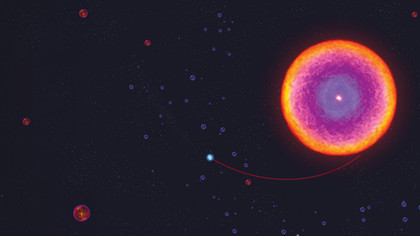
These levels introduce Attractors, making motes move in curved paths and creating arenas akin to solar systems. The difficulty is that people are used to things moving in straight lines, and curved paths are harder to predict.
A common error is tapping too much, thereby speeding up and leaving the solar system, or slowing down and colliding with the sun-like Attractor. Be patient, and look for opportunities where a tap or two will move you into an intersecting curved trajectory with another mote, and then repeat. Remember you can speed up time if gradually catching a target mote over several orbits.
Also master the Hohmann transfer, an orbital mechanics technique, which provides the most efficient way to increase your orbit: speed up a little by tapping directly ahead on your orbit, and then do so again at the far point.
Sign up for breaking news, reviews, opinion, top tech deals, and more.
Epicycles
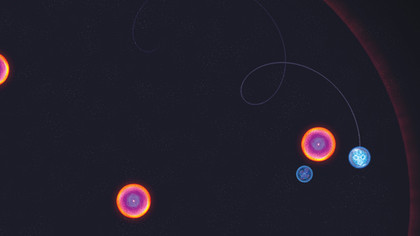
Essentially 'Solar plus', Epicycles arenas have central Attractors akin to suns, planet-like orbiting outer Attractors, and motes orbiting them. Rather than moving in an ellipse, you travel in a 'corkscrew' pattern, orbiting the nearest planet.
Success depends on thinking in terms of repeating orbits around your planet and in respect to the sun. Behaviour around planets works roughly like a small Solar level, and you should consume other motes there first, before travelling elsewhere.
Moving between planets is the tricky bit - speed up at extreme points (closest to or farthest from the sun) and watch how the orbit prediction path displays how you'll move out of orbit.
Once free of a planet, keep correcting your course to collide with another, and then correct again to attain a stable orbit. In later levels, you must absorb outer Attractors and the central one, which is truly difficult - best for those readers who've taken a course in spacecraft dynamics!
Warped Chaos
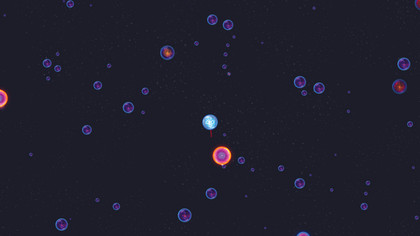
In these arenas, there are Attractors but no orbits. Attractors suck up everything around, and the pace can be fast. You must rapidly plan how to work your way up the food chain. In a sense, it's like an Ambient level, but with Attractors.
Timewarping can help, and you should plan to grab simple motes first, to curtail Attractor growth. Also note Attractors repel each other, and so once all simple motes are gone, Warped Chaos becomes a slow curved-path billiards game of sorts, where you can plan paths to smaller Attractors (including 'bank shots' off the walls), before finally tackling the largest.
Multiplayer motes
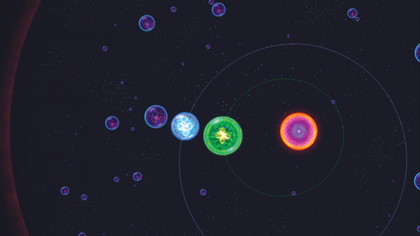
New in the latest version of Osmos, multiplayer enables you to connect locally or online and battle other players for mote supremacy. The object is most often to absorb your opponent's mote, and this plays out like a Sentient level with humans gunning for each other rather than battling AI motes.
But other arenas provide variety, such as Solar and Epicycles. These demand you absorb the Attractor to win - a kind of 'capture the flag' on a galactic level. There's no time-warping in multiplayer and people react differently from AI motes. It pays to be patient and wait for opportunities.
Early on in the game, grab as many motes as you can, and then wait for a good set of trajectories for intercepting your foe. There's no point in lunging at your opponent, because your mote will expel loads of mass, potentially be dodged, and will then be eaten.